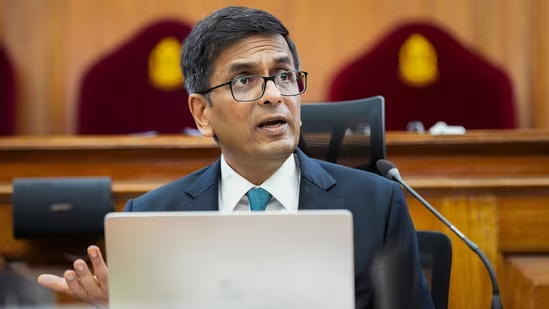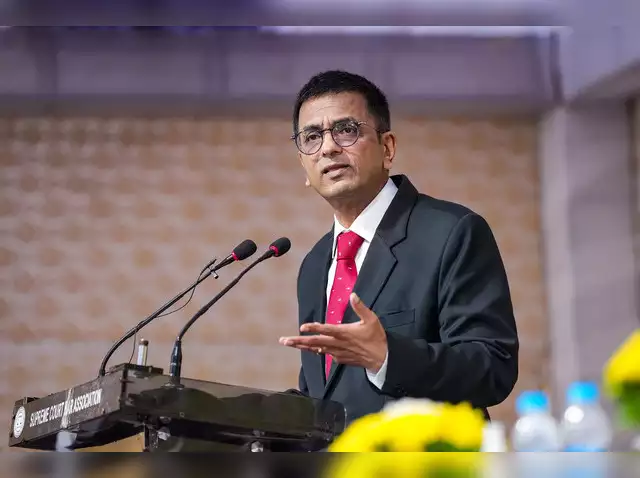| In Shorts: |
| · Scammer Impersonates CJI Chandrachud: A scammer posing as the Chief Justice of India, D.Y. Chandrachud, sent fraudulent messages requesting ₹500 for a cab fare. |
| · Supreme Court’s Swift Action: The Supreme Court of India filed a formal complaint with the cybercrime cell to address the issue and safeguard the integrity of the judiciary. |
| · Concerns Over Cybersecurity: The incident highlights the growing threat of cybercrime in India and the ease with which criminals can impersonate high-profile individuals. |
| · Call for Stronger Cyber Defenses: Experts emphasize the need for more robust cybersecurity measures, stricter regulations, and public awareness to prevent such scams. |
| · Precedent for Immediate Action: The Supreme Court’s response sets an example for other institutions, underscoring the importance of prompt action against cyber threats. |
In one shocking incident, which reflects the rising menace of cybercrime, the Supreme Court of India took strict action against a scammer who impersonated the Chief Justice of India, D.Y. Chandrachud, with intentions to deceive gullible people. He sent fraudulent messages as the CJI himself to ask for money as little as ₹500 from the recipients, ostensibly cab fare. Realizing full well that greater vigil and stern action need to be meted out against such pernicious acts, the brazen act has prompted the top court to lodge a formal complaint with the cybercrime cell.
Scam: A Brazen Impersonation
The scam came into the open when a number of people received a message in the name of the CJI himself asking for ₹500 for a cab fare. The message was innocuous-sounding and used informal language to give an air of authenticity to it. However, it sent out alarms among the recipients because many of them knew that such a request by the head of the judiciary was peculiar. Such audacity-the impersonation of the Chief Justice of India-has left many shocked, underlining to what extent cyber fraudsters would go in misusing the channels of digital communication.

Response of Supreme Court
It was upon learning of this scam that the Supreme Court went into action to handle it. The court filed a formal complaint with the cybercrime cell and informed law agencies about the incident. The proactive approach of the court is indicative of taking all necessary measures towards safeguarding the integrity of the judiciary and protecting citizens from cyber fraud. The incident is reportedly disturbing for even the Chief Justice, highlighting the severity of the situation.

Implications of the Scam
The case points toward a plethora of questions related to the state of cybersecurity in India, and more precisely, how easily the cybercriminals masquerade as prominent personalities. It is nothing new to hear about fraudsters’ exploits through digital platforms; nonetheless, impersonating an authority figure at the level of the CJI is an unprecedented aggravation. This shows the requirement for more awareness by individuals and institutions while navigating in the digital space, besides the implementation of stringent measures to avoid any such incident.
Cybersecurity in the Digital Age
This incident really points out the vulnerabilities that pervade the digital age. As more communication and transactions are still currently finding their niche online, so too have opportunities found their way into the exploitation of cybercriminals on these platforms. It is a day-to-day thing now to hear of sophisticated techniques, such as phishing and impersonation-techniques that even the most cautious amongst us find difficult to determine are scams. The complaint filed by the Supreme Court indeed serves as an eye-opener for more cybersecurity measures and awareness in regards to online fraud. The Way Ahead:StrengtheningCyber Defenses Following this development, increasing pressure mounts for more stringent cyber security policies in India. Experts say that public and private institutions should make more investments in sophisticated security technologies and give training programs to make people aware of the dangers of cybercrime. More regulatory measures and severe punishments are required for anyone who gets caught in cyber fraud. The response of the Supreme Court to this scam has set an example for other institutions to follow, and it provides notice that immediate action must be taken against cyber threats.
Conclusion
The CJI Chandrachud impersonation incident is a grim reminder of the threat created by cybercriminals. This demands increased vigilance, better cybersecurity measures, and quicker action on the part of the authorities to combat such activities. Since this is one of the increasingly digital modes of communication in everyday life, combating cyber threats should be among the top priorities for individuals and institutions.
For Latest News Updates Click Here
